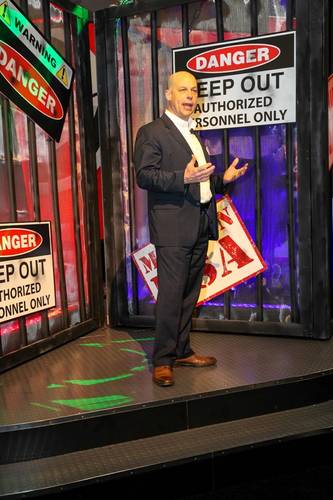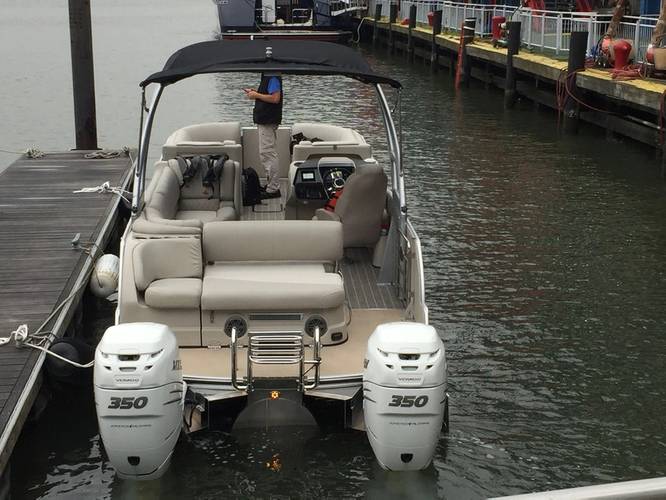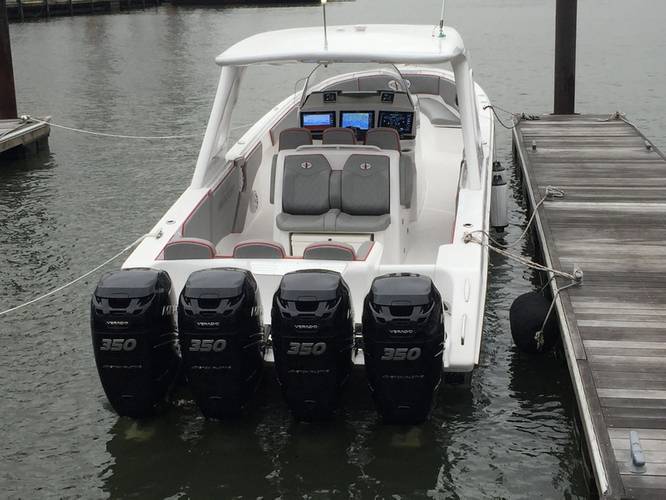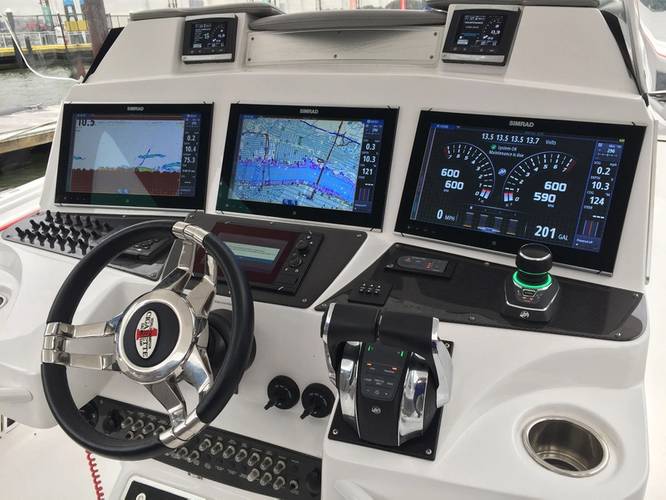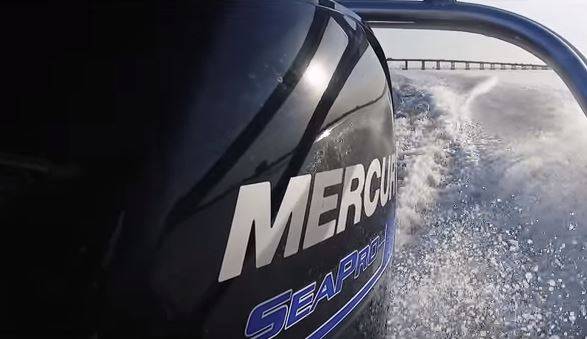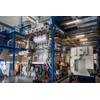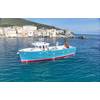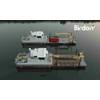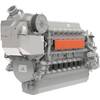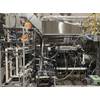Mercury Marine was in New York City earlier this year offering test drives for select engines and control systems. While in town, John C. Pfeifer, President - Mercury Marine, sat down with Maritime Reporter & Engineering News to discuss marine technology development that is driving his company further, faster into emerging commercial growth opportunities globally.
Barreling down the Hudson River at nearly 80 mph in a 39-ft. Cigarette boat powered by four 350-hp Mercury Marine Verado outboard engines tends to leave an impression. More impressive? Operating that same boat in tight quarters – amidst the waves and chop from a endless array of river traffic, being pulled one way by the current and pushed another by 20+ mph winds – with ease and certainty courtesy of Mercury’s intuitive joystick piloting system, which with the push of one button activating its Skyhook virtual anchor you are anchored in place despite the swirl of forces around the boat.
“Our intent is that you don’t have to use an owner’s manual to use our product” said Pfeifer, noting that in his nearly 12 years at Mercury Marine the one of the biggest differences between the company he joined in 2006 and the company he has led since 2014 is the refinement of the entire product line, including the intuitive nature of the integrated control systems and the lack of noise coming from the engines.
From its global headquarters in Fond du Lac, Wisconsin, Mercury Marine is a pure maritime power and supply play, a company that is embarked on a steady growth clip of about 6% each year, a company that sees its products and systems increasingly integrated into commercial maritime applications.
“We are happy with that growth rate,” said Pfeifer, “and the growth is coming from a variety of areas: marine propulsion – powered by the broadest offering in marine propulsion; as well as our parts and accessories business, too. We are growing with share gains, particularly in the outboard segment.”
The outboard segment is particularly interesting in both consumer and commercial markets, as a dramatic increase in horsepower per unit is driving new applications for outboard engines, effectively taking share from traditional stern drive applications.
In the outboard engine sector Pfiefer said, (bearing in mind Mercury Marine’s 50-ft. vessel length and under market), that 25% of the world’s applications for new propulsion systems are commercial, 75% are recreational. The technical trend driving the outboard market today is the conversion from 2-stroke to 4-stroke technology. He explains: “With the new engines, we can get as much torque out of a 4-stroke as a 2-stroke; the 2-stroke is popular because of torque, and in a marine propulsion system, torque is everything.”
With the 4-stroke owners get a lighter, quieter and much more fuel efficient engine. “Commercial operators are noticing this. Absent of any emissions regulations they are upgrading their fleets.” As an example he points to South Korea. “In South Korea they have no environmental regulation that would require a 4-stroke, yet they are almost 100% 4 Stroke due to the natural evolution of technology to better fit what they need.”
Mercury developed the SeaPro outboard engine series, in a range from 40 to 150 hp, engineered to be ultra-tough to meet commercial performance and reliability demands. The SeaPro series is calibrated differently, and comes equipped with unique components, for example more durable brackets, to better handle more rigorous commercial applications.
Mercury Eyes Commercial Growth
In looking at commercial and government potential in the 50 ft. vessel and under sector, Pfeifer and his team see green field of opportunity. “We see a lot of opportunity in commercial, but technology is only good if it’s reliable. You can have the greatest, most interesting, value orientated technology, but if it doesn’t work, every single time, it’s not very valuable. It has to be reliable, and that’s even more important in the commercial sectors.”
In addition to the company’s gas-fueled outboard engines, Mercury offers:
- Joystick control and features like “skyhook”. “Our joystick allows you to have extreme command authority, but also precision in terms of how finely you can move a boat with the joystick.”
- Smooth, Quiet Engines: “Commercial operators – just like recreational operators – want smooth and quiet engines,” said Pfeifer. “Whether you are fishing or running a water taxi or ferry, these operators want a smooth, quiet engine just like I do when I’m out with my family.”
- Diesel Outboard: Mercury has spark ignited diesel outboard engines based on its Optimax platform. “It is light, it is cost effective and it is being applied in government (Navy) applications, as well as commercial fishing applications where they seek extreme fuel economy.”
While much of the discussion and focus in on the outboard engines, Pfeifer noted that the company makes “diesel engines in partnership, primarily with FPT. They have a 6.7L mechanical diesel engine that we put in the market in commercial applications; that one sells well in China.”
While on the gasoline engine side of the business Mercury Marine manufactures its own purpose built engines, Pfeifer noted that on the diesel engine side, as a pure maritime play, there simply is not enough volume for the company to make purpose built units for the marine industry alone. For the diesel engine side Mercury Marine takes the “FPT powerhead, marinzes it and couple it with our prop to helm control systems, and with our inboard/outboard drives.”
“Our diesel product goes into ferry and
water taxi applications (for example, where the boats are operating) 12 to16 hours per day, back and forth, where fuel economy is paramount,” said Pfeifer.
• 







